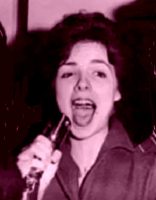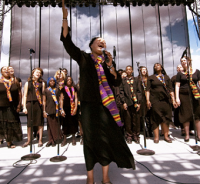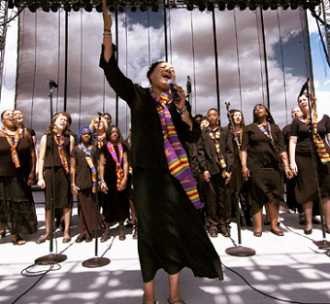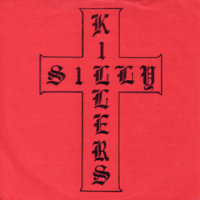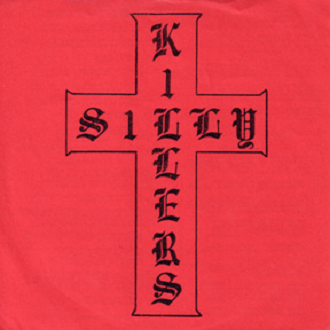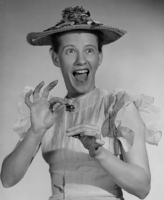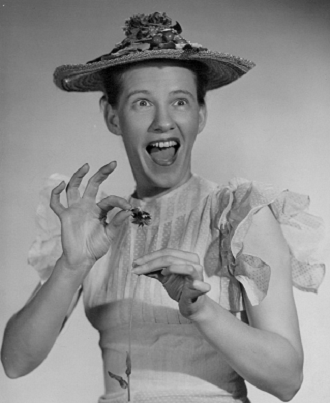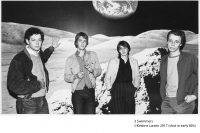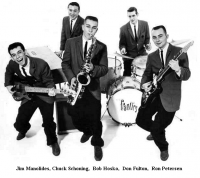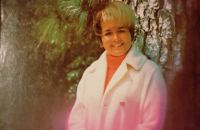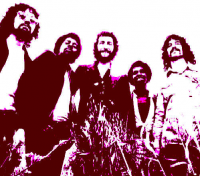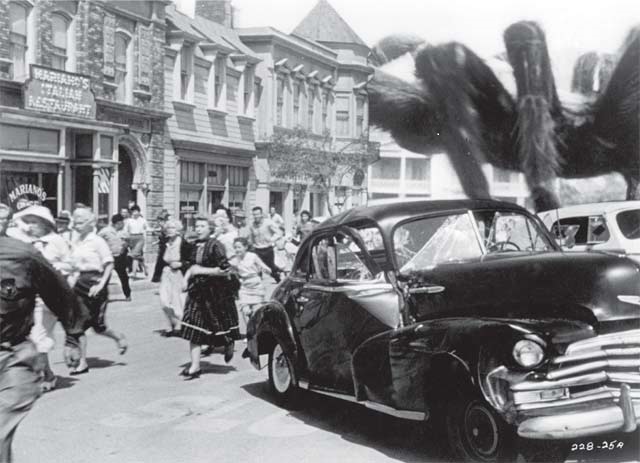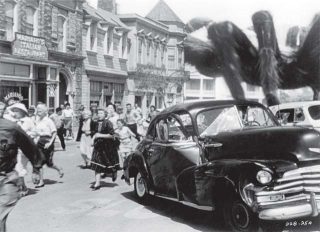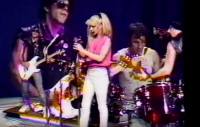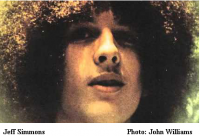
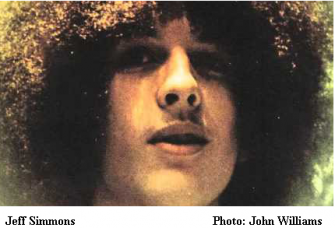 By the time the mid-60s The Northwest Sound has pretty much wound down. Many former teen-dance bands were moving closer to rock and the new psychedelic sounds coming out of L.A. and San Francisco. In some ways many local artists had begun to see Seattle as a northern outpost of San Francisco.
By the time the mid-60s The Northwest Sound has pretty much wound down. Many former teen-dance bands were moving closer to rock and the new psychedelic sounds coming out of L.A. and San Francisco. In some ways many local artists had begun to see Seattle as a northern outpost of San Francisco.
One of the bands that emerged in the mid-60s was Blues Interchange. David Lanz (future star of “new age” music) had been one of the band’s first members. The band began making the rounds of Seattle venues and became very popular with the tripped-out psychedelic crowd. Due to some of the members being drafted local boy Jeff Simmons signed on as bassist in 1967. Simmons was already an accomplished player with a gregarious, often comedic air about him Other members included Al Malosky on drums and guitarists Peter Larson (later replaced by Burke Wallace), and Danny Hoefer. Danny Hoefer would later go on to play in Tower of Power.
After the change of personnel, Blues Interchange found even more favor with Northwest audiences. One result of the changes was re-naming the band to Easy Chair. The transformation caught the eye of Seattle’s emerging rock scene as well as other pockets of psychedelic blues around the country
In 2014 the website Clear Spot would look back on Easy Chair, writing;
“Their epic West Coast blues features the unique chemistry of psychedelic guitar leads, fluid lines and hypnotic chording”.
Around this time the band was emerging they met up with notorious San Francisco manager Matthew Katz. Katz had been the first manager of Jefferson Airplane and had ben fired even before the release of their first album, Jefferson Airplane Takes Off. Seattle native Signe Anderson (September 15, 1941-January 28, 2016) did vocals, but soon left the band, handing over the task to Grace Slick. The firing of Katz would result in ongoing litigation over the release of original or licensed material by Jefferson Airplane. The litigation between Katz and Jefferson Airplane was not settled until 1987.
Katz was also involved in a dispute with Moby Grape beginning in 1968. Katz had sold the group members’ rights to their songs as well as their own name were signed away in 1973 to manager/producer David Rubinson without the band members knowing it. He retained rights to the name Moby Grape and a large part of their songs. Katz continued to send out various personnel under the name “Moby Grape” until 2005, the original members won back the rights to their name and started performing again as “Moby Grape” Even as late as 2007 Moby Grape (who’d won back the rights to their name) Katz threatened to file a lawsuit against Sundazed Records (licensed by SONY) claiming ownership of the album artwork and songwriting for the first three albums. The label was forced to withdraw the albums Moby Grape, Wow and Grape Jam. The albums have since been re-released.
Hooking up with Katz could have resulted in disaster but he remained a savvy (though untrustworthy) entrepreneur. In 1967 he opened the club “The San Francisco Sound” on Seattle’s Capitol Hill. The club was popular, but it lasted for less than a year. Katz’s real interest was to establish a venue for bands he managed.. The meeting between Blues Interchange and Katz gave the band more high-profile gigs opening for San Francisco bands he’d booked in his club including It’s A Beautiful Day, Tripsacord Music Box, West Coast Natural Gas and Black Swan. Katz also convinced Blues Interchange to change their name to Indian’ Puddin’ and Pipe. In yet another case of Katz’s dissembling, another band called Indian Puddin’ and Pipe already existed. Katz owned the names of several bands and could bestow them on any line-up he desired. Simmons’s Indian Puddin’ and Pipe dropped the name after severing ties with Katz in 1968. Fortunately neither the band nor it’s members walked away beholden to Katz except for the name he’d given them-not a very good one in the first place. Obtaining a new manager was painless. Glen Harmon was chosen to take on Katz’s job and endlessly worked to book and promote Easy Chair. Hammon had been a big fan who worked at Boeing, but from the start of his association with Easy Chair he proved to be a natural for the jobs of promotion and management.
Meanwhile Harmon and the band sought to get a record deal Eventually they were forced to finance their own recording at Vancouver WA’s Ripcord Studio. The songs recorded there were produced by Rick Keefer-who would go on to found Sea-West Studio in Seattle. The result of their sessions was a single-sided 12′ EP that included only three songs, Slender Woman, My Own Life and Easy Chair. Both Slender Woman and Easy Chair were written by Jeff Simmons. My Own Life was written by Peter Larson. With a release of only 1000 copies, it did well in the Northwest. The songs show a slight reliance on the San Francisco Sound, but also retains a bit of the jazz-inspired R&B that successful NW bands of the 50s and early 60s had always imbued into their music. The recordings are sparse, but have an honest, almost innocent quality. The band would later go on to be much heavier, but their initial (and only) release is probably the most sought-after, and most valuable record by any Seattle band in the collectors market. In the past few years the EP has been re-released on CD by several foreign and domestic labels.
With some powerful gigs behind them and a popular regional hit, Easy Chair were on their way. An opening slot for Cream at Seattle’s Eagles Auditorium may have been their high point. They also opened for The Chambers Brothers who were then at the height of their success. These concerts, along with opening for Blue Cheer the early Led Zeppelin enhanced their reputation. They were offered a contract with Tetragrammaton Records but turned it down. The label which was co-owned by Bill Cosby, a fact Easy Chair did not know at the time they were approached by the label Soon Tetragrammaton released a worldwide hit with Deep Purple ( “Hush”) In 1968 the label also licensed the release of John Lennon’s and Yoko Ono’s “Unfinished Music No. 1: Two Virgins” in the United States. The album’s cover featured nude photos of John and Yoko on the front and back jacket cover. The Beatles and Lennon’s US label, Capitol Records, refused to release or distribute it, citing negative responses from retailers, and American audiences objection to nuditiy, so Tetragrammaton stepped in to distribute the album in the US.
Easy Chair under the name Ethiopia was slated to open for Frank Zappa and The Mothers of Invention at the Seattle Center Arena on August 24, 1968. During sound check, Frank Zappa and his business partner Herb Cohen listened to the band and were impressed enough to fly them to Los Angeles for an audition and possible contract with one of two new labels Zappa had created (Straight and Bizarre Records). The Zappa gig took place a week before the band (billed as Easy Chair) performed at the first Sky River Rock Festival. Easy Chair/Ethiopia played their booked obligations in the Northwest and were then on the way to L.A. Soon Ethiopia was signed to Bizarre Records and the band waited to record….and waited. Although they were signed as Ethiopia, the band once again reverted to Easy Chair for a handful of gigs with Zappa.
Their finest moment during their stay in Los Angeles was taking part in Bizarre Record’s legendary “Gala Pre-Xmas Bash” at Santa Monica’s Shrine Exhibition Hall on December 6th & 7th 1968. Easy Chair played the shows alongside The Mothers of Invention, Wild Man Fischer, Alice Cooper, and the GTOs. Ostensibly a pre-Christmas gig, it was actually Zappa’s debut of the roster of Bizarre acts that he, for the most part, had personally signed. This gig was definitely one of the most important shows of it’s day and possibly one of the most important gigs The Mothers of Invention ever played.
After months of living in hotels, recording negotiations and long periods of inactivity Easy Chair members became discouraged. It was clear the studio sessions were never going to happen. They decided to return to Seattle. Jeff Simmons and drummer Al Malosky stayed in LA. In 1969 Jeff Simmons (as a solo artist) was signed to Frank Zappa’s Straight Records to record two solo albums. Malosky went along for the ride as a sideman on the first album. Jeff’s assignment was to create the soundtrack for Naked Angels a biker/sexploitation film . Although it’s not meant to be high art, the film itself is fairly decent within it’s genre. Jeff”s soundtrack stands out as well executed psychedelia and is really the highlight of the film. The film featured Penelope Spheeris (who would later direct both Decline of Western Civilization documentaries) and Corey Fischer (one of Robert Altman’s stable of actors, and who appeared in both the film and the TV series M.A.S.H. The film got very little attention outside it’s intended audience but Simmon’s soundtrack album has long been a favorite among his fans.
Later in 1969 Jeff released what is universally considered his best solo work. The album Lucille Has Messed My Mind Up leans more toward the accessible music Frank Zappa had released. In fact Zappa contributed heavily to the album as a guitarist, wrote the title track and co-produced with engineer Chris Huston. Zappa wrote the title track and also co-wrote “Wonderful Wino” with Simmons. Zappa credited his work on the album under the pseudonym Lamarr Bruister. Later Zappa would work Lucille into an entirely different version for Joe’s Garage and “Wonderful Wino” later shows up on Zappa’s Zoot Allures. Zappa rarely co-wrote his music, so it’s apparent that he had high regard for Simmons during this period.
On “Lucille Has Messed My Mind Up” a variety of players who are often heard in Mothers and Zappa’s bands show up. Simmons is featured on lead vocals, keyboards, bass guitar, and accordion. Craig Tarwater-former member of the legendary L.A. garage band Sons Of Adam plays guitar, Ron Woods (of Pacific Gas and Electric) on drums, Ian Underwood on Sax and fellow Seattle native John Kehlior, (who’d played with The Frantics and The Daily Flash) on drums for two tracks (“Lucille Has Messed My Mind Up” & “Raye“). The reception of Lucille was positive, but like all Zappa-related albums up ’til then, did not sell to the masses.
Instead of offering another contract with Straight Records, Zappa went a step further. He asked Jeff to join The Mothers of Invention. He had already played a one-off concert of the the album Hot Rats.
Around this time Jeff reminisced about his hometown to the U.K. Music journal Melody Maker, saying:
“There’s a lot of music in Seattle, a lot of clubs and musically it’s influenced by San Francisco and even more, Chicago. For instance when I started playing, the first people I heard were the Spoonful and The New Vaudeville Band. But it wasn’t long before I forgot them and got into Little Milton and Magic Sam”.
In 1970 Simmons appeared on Chunga’s Revenge, which was Frank’s third “solo” album…even though Zappa included his floating roster of musicians with himself as the main character. The album was largely a transitional one, retaining some of the satire and humor of earlier albums, though heading more toward the avant-jazz of future projects. It was also the first time Flo & Eddie (Mark Volman and Howard Kaylan, formerly of The Turtles) made a studio appearance with Zappa. Jeff Simmons had also stepped up his game with Chunga’s Revenge by playing alongside Ian Underwood again, as well as drummer Aunsley Dunbar, and keyboardist George Duke. Others who took part in Chunga’s Revenge was John Guerin, Max Bennett and Don “Sugarcane” Harris.
In 1971 Frank Zappa began to film his ambitious art film 200 Motels. It’s commonly held that Jeff Simmons had quit the band shortly before the shoot began, but it’s not entirely clear what happened. Simmons is seen in the documentary The True Story of Frank Zappa’s 200 Motels-though not credited. The actual film has large segments based on Jeff. There is a cartoon segment in which “Jeff”, tired of playing what he refers to as “Zappa’s comedy music”is convinced by his good conscience (played by Donovan) to “quit the group” There’s an ongoing (inside joke?) of characters saying “Jeff quit the group” throughout the film. “Dental Hygiene Dilemma” sees Jeff smoking a marijuana cigarette which had been dipped in Don Preston’s “foamy liquids” and Jeff’s imagining Donovan appearing to him on a wall-mounted television as his “good conscience”. “His good conscience” asks Jeff not to steal the towels. Studebaker Hoch appears to him as his evil conscience in the form of Jim Pons, tells Jeff to steal ashtrays and convinces Jeff to quit the Mothers of Invention, to “et your own group together. Heavy! Like Grand Funk or Black Sabbath.
Although it’s likely he was on set at least occasionally it’s claimed that had read the script of 200 Motels before the shooting and discovered it included things Simmons and others had actually said when they thought Frank was out of earshot. It’s claimed these negative comments were based on secret hotel-room recordings. Another version is that Zappa fired Simmons for smoking too much marijuana. This version would be in keeping with Zappa’s firm rule of not working with musicians using drugs…at least not if it affected their professionalism. But the former version would back up Zappa’s habit of taping discussions among band members (recorded with or without their knowing it). They were “anthropological field recordings” as Zappa liked to call them. It would be a more interesting story if Simmons had actually quit because he was angry about the secret recordings. But it’s just as probable that he was fired for his objection to the script. Many years later full songs, out-takes and interviews were included on Playground Psychotics. The album includes a track called “Jeff Quits” and further complicates the question of whether Simmons quit or was fired. Jeff probably was smoking too much pot and he may have well wanted to move on from Zappa. In 1972 Frank Zappa told Jip Golsteijn of the Dutch magazine OOR:
“Jeff Simmons is a great bassist, which will become obvious to everyone during the European tour, but I thought he had another talent. He was a comedian and I wanted to exploit it, especially because we use quite visual elements in our shows. I let (Jeff) play Rudolph the Reindeer which has always been a huge success. Initially, he had no objection, but I was told after a while that he considered himself a heavy bass player not a clown. I knew which way the wind was blowing since Jeff’s wife had recently said something like that to me. His wife, of course, complained that he should not be misused by me and should leave the group. Jeff told me in honesty that he was seriously considering starting his own band. I then said ‘can’t we play that conflict in 200 Motels that he wanted to quit’?
Then at Pinewood Studios ( London), where we recorded the film, I thought we could show Jeff brooding in a hotel room and is torn by doubt. His good conscience tells him to stay in the group, but his bad conscience tells him that he will be made a fool by Zappa and that he has become the real heavy bass player he really is. When Jeff heard what this meant, he turned quite pale, because he took it as a dig, although he knew exactly what was intended. Shortly afterwards he quit the group anyway…precisely at a time when we could not afford to lose him, right in the middle of recordings. Eventually we decided to change Jeff’s portion of the film. Another part was created for Martin Liquort (Ringo Starr’s driver) that is reminiscent of Jeff. In the scenes where ‘Jeff’ is playing, it’s Martin in the background with a guitar in his hand. Martin can not really play.”
(Zappa’s words here have been translated to English from Jip Golsteijn interview, originally written in Dutch)
Athough Jeff doesn’t appear in the film there’s an ongoing line of “Jeff has quit the group” sprinkled throughout the dialogue as an inside joke. One long animated sequence called “Dental Hygiene Dilemna” finds a very high Jeff struggling with his good conscience (who he believes to be Donovan on a wall mounted TV screen) and his bad conscience. Among advice Jeff’s good conscience gives him is”don’t rip off the towels, Jeff“. His bad conscience soon appears and says “Jeff, I’d like to have a word with you . . . about your soul. Why are you wasting your life, night after night playing this comedy music?” Jeff replies “I get so tense“. “Of course you do my boy” says his bad conscience. That’s why it would be best to leave his stern employ….You’ll make it big!” “That’s right” says Jeff. “And then I won’t be SMALL!” “This is the real you!” Jeff’s bad conscience tells him “Rip off a few more ashtrays. Get rid of some of that inner tension. Quit the comedy group! Get your own group together. Heavy! Like GRAND FUNK! or BLACK SABBATH “.”Like COVEN!” shouts Jeff.
Apparently it would take animation, in the absence of Simmons, to complete Frank’s vision.
Whatever the reason for Simmon’s leaving, by 1972 he was back in the fold of musicians Frank Zappa employed to record Waka/Jawaka • Hot Rats. He also continued to tour with Zappa’s band, and took part in the 1974’s Roxy and Elsewhere. The album includes a live performance at The Roxy Theater in Los Angeles (with some overdubs) recorded the 8th, 9th and 10th of December, 1973. The Elsewhere” tracks (“Son of Orange County” and “More Trouble Every Day”) were recorded on May 8th, 1974, at the Edinboro State College in Edinboro, PA. Sections of “Son of Orange County” were also recorded on May 11, 1974, at the Auditorium Theatre in Chicago but does not contain overdubbed material. Jeff Simmons plays rhythm guitar on all tracks and adds occasional vocals. After Roxy and Elsewhere, Jeff played live with some of Zappa’s succeeding live performances. He’s also heard playing on some of the “official” live albums that were released after Frank’s death. Recordings Zappa probably wouldn’t have allowed to be released because of their poor audio quality.
Jeff Simmon’s recorded legacy with Zappa had included him providing bass, guitar, and/or vocal for Chunga’s Revenge, Waka/Jawaka, Roxy & Elsewhere, You Can’t Do That On Stage Anymore Vol. 1, You Can’t Do That On Stage Anymore Vol. 6, and Playground Psychotics; He’s also featured on the Beat The Boots series of bootlegs that were later released by Rhino Records. Disc’s he’s included on include Freaks & Motherfuckers, Unmitigated Audacity, Piquantique, Disconnected Synapses, Tengo Na Minchia Tanta, and At The Circus
Although Jeff’s history after saying goodbye to Frank is a bit sketchy, by 1980 he found his way back to Seattle. In the 80’s, Simmons was busy performing with such bands as The Backtrackers, The Shimmering Guitars, and Cocktails For Ladies and as his alter-ego l’il Bobby Sumpner and his band The Stump Blasters. He claimed in the 1990’s, he was writing a book (“I Joined The Mothers Of Invention… For The F.B.I.”) which is now in unpublished manuscript form. Given Jeff’s sense of humor it’s hard to know if the manuscript actually exists. It would be hard for a publisher or editor to pass up a book based on Jeff’s time with the Mothers…even the title is intriguing!
In 1982 Frank Zappa appeared as a guest DJ on BBC radio (UK). He played some of his favorite songs including “I’m in The Music Business” by Jeff.
In 1988 Jeff was featured in the psychotronic “grunge” inspired local film Rock and Roll Mobster Girls, directed by Rick Werner. Aside from being barrels of fun the film also includes more Seattle rock luminaries as well as local fans.
Over the years Simmons had worked on material for a potential new CD. He says it is the culmination of 20 years work. Finally, in 2004 he was able to release “Blue Universe” which got rave reviews.
In the webzine Jet City Blues Mark Dalton wrote:
“Jeff Simmons, a man with his heart in the blues no matter what he’s doing, has a hilarious persona as a performer that draws from this same well. Simmons has written a whole cycle of great tunes about “Treatment,” for example – with a couple such tunes residing on this CD. Simmons’ ne’er-do-well musician character is always one step ahead of those pesky treatment program guys – whether he’s “Breakin’ Out of Treatment,”or kicking back and enjoying the life of a “Treatmon’ Center Playboy” while he’s there, as he does on this CD.
In November 2010, Jeff Simmons took part in a Q&A session at the “Frank Zappa At The Roundhouse” celebration of Frank Zappa’s music in London. Jeff played with the Dweezil Zappa Played Zappa band at the same festival with special guests Ian Underwood & Scott Thunes as well. The celebration also included the UK premiere of “The Adventures of Greggery Peccary” an avant-symphonic work that is one of Zappa’s most epic and most popular classical pieces. Besides The Adventures of Greggery Peccary, the London Sinfonietta played Zappa’s “Revised Music for a Low Budget Orchestra”. The performance included a solo set by Jeff as a multi-instrumentalist and a long-time member of Zappa’s circle.
Archival footage of Jeff Simmons was included in Thorsten Schütte’s 2016 documentary Eat That Question: Frank Zappa in His Own Words
IMDb credits Jeff Simmons for sound editor of several TV series during the 90s but I can’t confirm this is the same Jeff Simmons. Any information would be welcome. Also feel free to offer corrections or comments below.
-Dennis R. White. Sources; “Jeff Simmons” (Zappa Wikijawaka); Lemonde Kid “Its too late for them to get their due but Katz needs to get HIS!” (Love: The Message Board for Love Fans, October 12, 2011); Mark Dalton, (“Blue Universe CD Review” Jet City Blues, November 19, 2005); “Jeff Simmons” (spotify.com); “Jeff Simmons” (World in Sound, worldinsound.com); “Jeff Simmons – ‘Lucille Has Messed My Mind Up” ( The Day After Sabbath, Jan 23, 2015) “Jeff Simmons” (Melody Maker, December 5th 1970); Dean R. Hegerty,”A Guide To Straight Label Records & Compact Discs” (United Mutations, 2002); “Jeff Simmons” (lastfm.com) “Eagles Auditorium” (A Seattle Lexicon)callihan.com/seattle/pophist.htm); Jeff Simmons-Lucille Has Messed My Mind Up (allmusic.com); Alan J. Stein “Sky River Rock Festival and Lighter Than Air Fair opens a three-day run near Sultan on August 30, 1968” (HistoryLink.org, Essay 5425. March 15, 2003); “Easy Chair” (Clearspot, www.clear-spot.nl/item/410251/easy_chair_easy_chair.htm); “FZ and Secret Recordings” zappateers.com, July 20, 2010); Jip Golsteijn “De industrie wilde het Fillmore album ontzettend geil aanprijzen”(OOR Magazine, Issue 15. 1971); “Frank Zappa at The Roundhouse”(The 405, September 17, 2010); James Bush, “Easy Chair” (Encyclopedia of Northwest Music. Sasquatch Books, 1999); “Naked Angels” (IMDb.com); 200 Motels. film “Dental Hygiene Dilemna” sequence (directors Frank Zappa & Tony Palmer, 1971); “The True Story of Frank Zappa’s 200 Motels” film. (written and directed by Frank Zappa, 1988); “Eat That Question: Frank Zappa in His Own Words” film. ( directed by Thorsten Schütte, 2016) Scott Hill “From Straight to Bizarre Explores Frank Zappa’s Freak Indies” (Wired Magazine, January 19, 2012); “Jeff Simmons” (IMDb.com)



